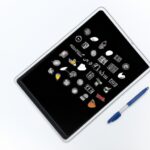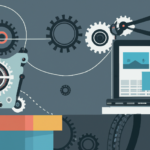Internet of Things (IoT) applications span across various sectors, connecting devices and enabling data exchange. In healthcare, IoT assists with remote monitoring of patients, promoting personalized and efficient care. Smart homes leverage IoT for advanced security, convenience, and energy efficiency. Industrial IoT optimizes processes through real-time monitoring and predictive maintenance. Agriculture benefits from IoT, enhancing crop yield and reducing water usage through smart irrigation systems. Transportation is revolutionized by IoT with connected vehicles enabling efficient traffic management and improved safety. Retail and logistics utilize IoT for inventory tracking and supply chain management. Smart cities leverage IoT to improve citizen services, traffic management, and environmental sustainability. Overall, IoT applications enhance productivity, efficiency, and quality of life across various domains.
Table of Contents
- IoT applications in agriculture
- IoT applications in healthcare
- IoT applications in industrial processes
- IoT applications in smart homes
- IoT applications in transportation
(IoT | Internet of Things | What is IoT ? | How IoT Works? | IoT Explained in 6 Minutes | Simplilearn)
The Internet of Things (IoT) is a network of interconnected devices that can communicate and share data without human involvement. This technology has led to the development of various IoT applications, which have revolutionized the way we live and work.
One of the most common IoT applications is in the area of smart homes. IoT-enabled devices such as smart thermostats, lighting systems, and security cameras allow homeowners to control and monitor their homes remotely. This technology offers convenience, energy efficiency, and enhanced security.
IoT applications have also transformed the healthcare industry. Devices such as wearable trackers and smart medical devices can monitor patients’ vital signs and transmit real-time data to healthcare providers. This enables remote patient monitoring, early detection of health issues, and timely intervention.
In the transportation sector, IoT applications have paved the way for smart cities and connected vehicles. Traffic signals, parking meters, and electric vehicle charging stations can be connected to the internet, improving traffic management and reducing congestion. Connected vehicles can communicate with each other and with infrastructure, enhancing road safety and efficiency.
IoT applications are also making waves in the agriculture sector. Smart farming systems use sensors and data analysis to optimize irrigation, monitor soil conditions, and manage crop health. This enables farmers to make informed decisions, increase crop yields, and reduce water and pesticide usage.
These are just a few examples of the numerous IoT applications that are transforming industries and improving our lives. As the technology continues to advance, we can expect even more innovative applications that will shape the future.
IoT applications in agriculture
IoT applications have revolutionized various industries, including agriculture. In the realm of farming, IoT technologies are enhancing productivity, efficiency, and sustainability. With the use of connected devices and data analytics, farmers can optimize crop yields, reduce resource consumption, and mitigate risks.
One significant application of IoT in agriculture is precision farming. By collecting data from sensors placed in the fields, farmers gain valuable insights into soil moisture levels, temperature, and nutrient content. This information allows them to make informed decisions about irrigation, fertilization, and pest control. With precision farming, resources can be allocated precisely where and when they are needed, minimizing waste and maximizing yield.
Livestock management is another area benefiting from IoT solutions. Sensors attached to animals monitor their health, behavior, and location. Real-time data on heart rate, body temperature, and feeding patterns enable early detection of illnesses. Farmers can, therefore, intervene promptly, reducing the risk of disease spread and minimizing losses. Additionally, IoT devices provide geolocation information, ensuring that animals remain within designated areas, preventing them from straying or becoming prey to predators.
Efficient water management is critical in agriculture, particularly in arid regions. IoT technology enables farmers to monitor water usage and automate irrigation systems based on environmental conditions. Through the integration of weather forecasts and soil moisture sensors, watering can be adjusted to prevent over or under-watering. This not only conserves water but also prevents soil erosion and nutrient leaching.
Temperature and humidity control within greenhouses is crucial for optimal plant growth. IoT devices offer real-time monitoring and control, ensuring that plants receive the necessary temperature and humidity levels throughout the year. This eliminates the need for manual intervention and enables farmers to focus on other essential tasks. With IoT, greenhouse conditions can be regulated remotely, even from mobile devices, providing flexibility and convenience.
The application of IoT in agriculture goes beyond individual farms. Smart agriculture networks enable collaboration and information sharing among farmers, researchers, and policymakers. Data on crop yields, weather patterns, and disease outbreaks can be collected and analyzed on a large scale, facilitating evidence-based decision-making and policy formulation. This collective knowledge enhances the industry’s resilience and sustainability.
In conclusion, IoT applications have transformed agriculture, allowing for increased productivity, resource optimization, and risk mitigation. Precision farming, livestock management, efficient water usage, greenhouse control, and collaborative networks are among the many ways IoT is revolutionizing the sector. As technology continues to advance, it is expected that IoT will play an even more significant role in shaping the future of agriculture, ensuring food security and environmental sustainability for generations to come.
IoT applications in healthcare
IoT applications in healthcare revolutionize the way medical services are delivered, improving patient outcomes and enhancing the overall healthcare experience. The integration of IoT devices and technologies has opened up new possibilities for remote patient monitoring, real-time data analysis, and personalized treatments.
One significant application of IoT in healthcare is remote patient monitoring. IoT devices, such as wearables and sensors, enable continuous monitoring of vital signs, allowing healthcare providers to remotely track patients’ health conditions. This real-time data can help detect early signs of deterioration, preventing adverse events and reducing hospital readmissions.
Additionally, IoT devices enable the collection of real-time data that can be analyzed to gain valuable insights into patient health. This data can be used to create personalized treatment plans, detect patterns, and support evidence-based decision making. By leveraging IoT analytics, healthcare professionals can monitor patients’ health proactively, identify potential issues, and intervene before they worsen.
IoT applications in healthcare also extend to medication management. Smart pill bottles and medication dispensers equipped with IoT technologies can remind patients to take their medications, track adherence, and send alerts to healthcare providers or caregivers in case of non-compliance. This can reduce medication errors, improve medication adherence rates, and enhance patient safety.
Furthermore, IoT devices can revolutionize the management of chronic diseases. Connected devices can monitor and track parameters such as blood glucose levels for diabetic patients, enabling effective disease management. Healthcare providers can receive real-time alerts in case of abnormal readings, allowing for timely interventions and reducing the risk of complications.
In the healthcare industry, IoT can also optimize hospital operations and improve patient flow. IoT-enabled asset tracking systems can help locate medical equipment, ensuring their availability when needed and reducing search time. Additionally, IoT technologies can be integrated with electronic health records, streamlining administrative tasks, reducing errors, and improving the efficiency of healthcare providers.
The potential for IoT in healthcare is immense. From remote patient monitoring to personalized treatments and optimized hospital operations, IoT has the power to transform the healthcare landscape. However, it is crucial to address concerns around data security and privacy to ensure the safe and responsible use of IoT in healthcare settings.
In conclusion, IoT applications in healthcare hold tremendous promise for improving patient care, enhancing efficiency, and optimizing outcomes. The integration of IoT devices and technologies enables remote patient monitoring, real-time data analysis, and personalized treatments. Despite the potential benefits, it is essential to prioritize security and privacy to foster trust and ensure the widespread adoption of IoT in healthcare.
IoT applications in industrial processes
IoT applications in industrial processes have emerged as a game-changer, revolutionizing the way businesses operate. With interconnected devices and sensors, companies can seamlessly monitor and control various aspects of their industrial operations.
One key area where IoT is making a significant impact is in predictive maintenance. Traditionally, maintenance tasks were carried out based on predetermined schedules, often resulting in either unnecessary downtime or unexpected breakdowns. However, with IoT-enabled sensors, machines can now continuously transmit data about their performance and condition in real-time. This data is then analyzed using advanced algorithms to predict and prevent potential failures. This approach not only reduces maintenance costs but also minimizes unplanned downtime.
Another area where IoT is transforming industrial processes is inventory management. By utilizing RFID tags and sensors, businesses can track the movement and location of their inventory in real-time. This enables them to optimize their supply chain, streamline operations, and reduce costs. Additionally, IoT can also help prevent stockouts by automatically triggering reorders when inventory levels reach a certain threshold.
IoT is also playing a crucial role in enhancing workplace safety. Industrial environments are often characterized by hazardous conditions, and ensuring the well-being of employees is of paramount importance. With IoT technologies, companies can monitor factors such as temperature, pressure, and gas levels in real-time. Alerts can be sent to operators and supervisors if any unsafe conditions are detected, enabling them to take immediate action and prevent accidents.
Furthermore, IoT applications enable businesses to optimize energy consumption in industrial processes. By leveraging smart sensors and systems, companies can identify areas of energy wastage and implement strategies to reduce their carbon footprint. For example, factories can use IoT to automatically adjust lighting levels based on occupancy and optimize HVAC systems for energy efficiency. This not only helps businesses achieve their sustainability goals but also leads to significant cost savings.
In conclusion, IoT applications are empowering businesses to revolutionize their industrial processes. From predictive maintenance and inventory management to workplace safety and energy optimization, the possibilities are limitless. By leveraging IoT technologies, companies can enhance efficiency, reduce costs, and stay ahead in today’s highly competitive marketplace. The future of industrial processes is interconnected, and embracing IoT is the key to unlocking its full potential.
(IoT Internet of Things | What Is IoT and How It Works? | IoT Explained in 5 Minutes | Simplilearn)
IoT applications in smart homes
IoT applications in smart homes have revolutionized the way we live, creating a seamless and connected environment. Imagine waking up in the morning and feeling the gentle illumination of your smart lights gradually brightening your room, simulating the sunrise to gently awaken you from your slumber.
As you step into your bathroom, the smart mirror comes to life, displaying the weather forecast along with your customized morning routine. The mirror even analyzes your skin condition and recommends the most suitable skincare regimen.
Heading downstairs, the aroma of freshly brewed coffee fills the air, thanks to your smart coffee machine that syncs with your alarm and starts brewing as soon as you wake up. The smart kitchen appliances work in harmony, ensuring your breakfast is prepared just the way you like it, by adjusting the heat of the toaster and the timing of the blender.
As you leave for work, your smart thermostat intelligently adjusts the temperature, making sure your home remains comfortable while saving energy. It learns your habits and preferences, taking into account the weather conditions, time of day, and even your current location.
Throughout the day, you receive notifications on your smartphone about any unexpected activity in your home. With a quick tap, you can access the live video feed from your smart security cameras, ensuring peace of mind even when you’re away.
Returning home in the evening, your smart home welcomes you with soothing music playing in sync with the lights. The temperature is set to your preferred level, and the curtains draw themselves open, revealing a picturesque view of the sunset.
During your downtime, you can effortlessly control the entertainment system, with voice commands or a simple touch on your smartphone. The smart TV recommends shows and movies based on your preferences and integrates seamlessly with your streaming platforms.
When it’s time for bed, the smart home ensures a tranquil environment. The lights dim gradually, creating a cozy ambiance. The smart curtains close, blocking out any unwanted light. The smart home security system arms itself, keeping you safe throughout the night.
IoT applications in smart homes blend technology with comfort, convenience, and security. They enable us to create personalized and efficient living spaces that adapt to our needs and enhance our daily lives. Discovering the endless possibilities of the IoT, we find ourselves at the doorstep of a future where our homes are truly smart.
IoT applications in transportation
IoT applications in transportation revolutionize how we navigate and manage our daily commutes. With the advancement of technology, our vehicles are becoming more connected, making our journeys safer, efficient, and convenient.
One significant application of IoT in transportation is vehicle tracking and fleet management systems. Using GPS and sensors, these systems can monitor and track vehicles in real-time. This enables companies to optimize routes, reduce fuel consumption, and increase overall operational efficiency. With this technology, companies can also monitor drivers’ behavior, ensuring compliance with traffic rules and preventing unauthorized usage.
Another essential application is smart traffic management. IoT-enabled sensors installed at various points in the road network can collect data on traffic congestion, flow, and accidents. This information is then used to analyze traffic patterns, adjust signal timings, and provide real-time updates to drivers via mobile apps or electronic roadside signs. Smart traffic management systems aim to reduce congestion, minimize travel time, and enhance road safety.
IoT also plays a crucial role in vehicle maintenance and diagnostics. Connected vehicles can transmit real-time data about their performance, such as engine health, tire pressure, and fuel levels. This data helps identify potential issues, schedule proactive maintenance, and reduce unexpected breakdowns. By ensuring optimal vehicle conditions, IoT applications contribute to safer and more reliable transportation.
Furthermore, IoT applications in transportation contribute to improving public transportation systems. Smart buses and trains equipped with IoT devices can collect passenger data, enabling operators to analyze ridership patterns, optimize routes, and improve the overall passenger experience. Real-time information on bus and train schedules allows commuters to plan their journeys efficiently.
Additionally, IoT technologies are transforming the concept of vehicle sharing and ride-hailing services. With IoT-enabled platforms, users can easily locate available vehicles, book rides, and make payments seamlessly. This convenience encourages the adoption of shared transportation, reducing traffic congestion and carbon emissions.
In conclusion, IoT applications in transportation are revolutionizing the way we travel. From vehicle tracking and fleet management to smart traffic management and vehicle maintenance, IoT technologies are enhancing safety, efficiency, and convenience in transportation systems. With continued advancements, the future of IoT in transportation holds the potential for even more transformative changes, ultimately improving our daily commutes and reducing the environmental impact of transportation.













